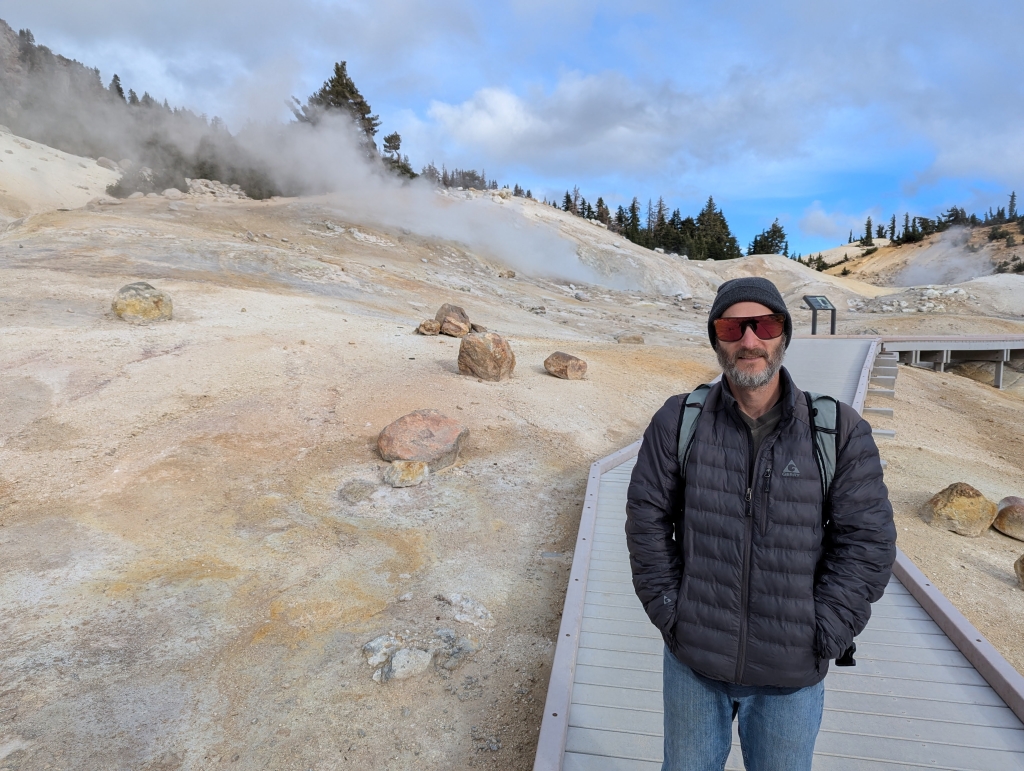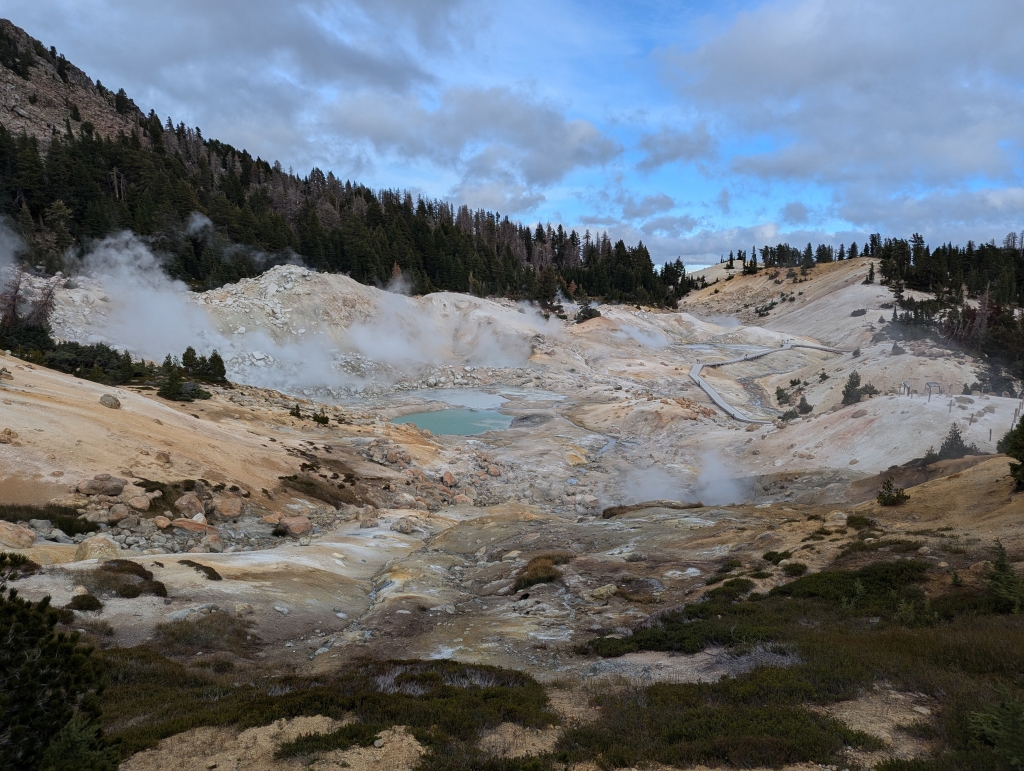by Paul Reed, November 2024
For IAE’s Habitat Restoration Program, our bread-and-butter tends to be prairie and oak habitats of the Willamette Valley, Oregon. Every once and a while, though, we’re presented with an opportunity to work somewhere new and unusual. Such was the case recently for Paul Reed and Andrew Esterson, who were lucky enough to take a trip to California’s Sierra Nevada mountains to help restore a population of a rare plant species.
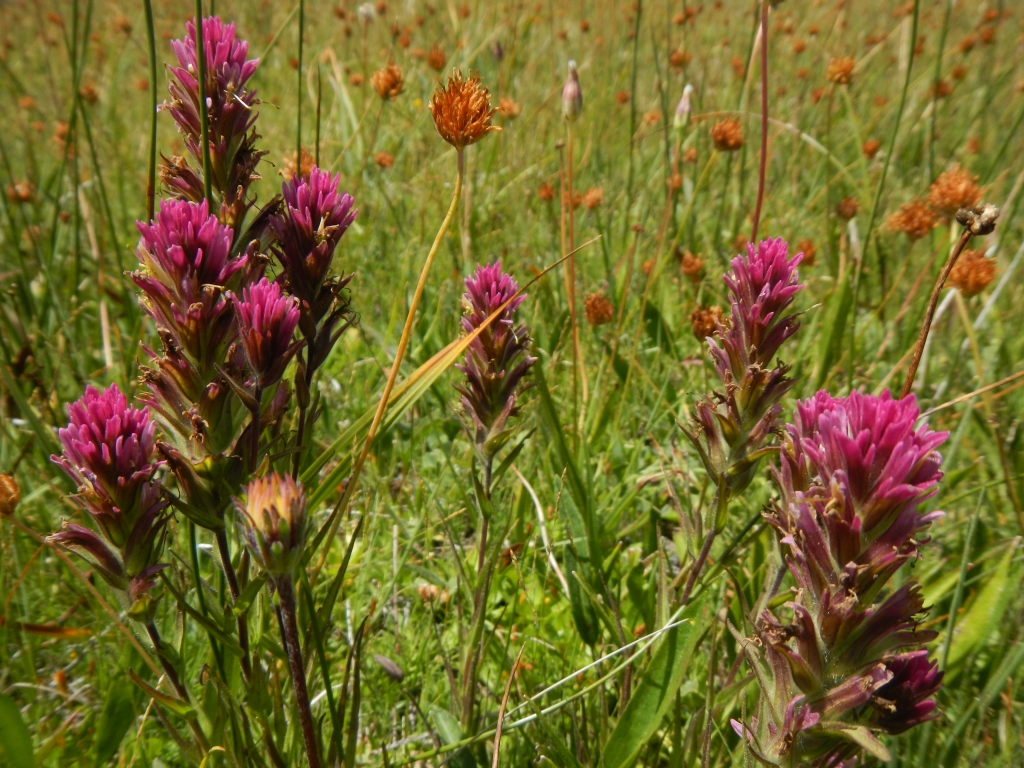
Lassen paintbrush (Castilleja lassenensis) is a rare plant endemic to a narrow region around Mount Lassen, California. There are only a few dozen known populations, most of which occur within Lassen Volcanic National Park and the adjacent Lassen National Forest. As a member of the paintbrush genus, this montane meadow wildflower is hemiparasitic, meaning that it partially relies on other “host plant” species to receive nutrients through root connections. Most Lassen paintbrush populations occur within wet meadow habitats between 5,000-8,000 ft elevation. These meadows tend to be seasonally inundated with snow in the winter and remain moist from snowmelt throughout the growing season. Within these meadows, Lassen paintbrush tends to occupy a narrow hydrologic niche slightly upslope from the wettest areas, where conditions are just right (neither too wet nor too dry).
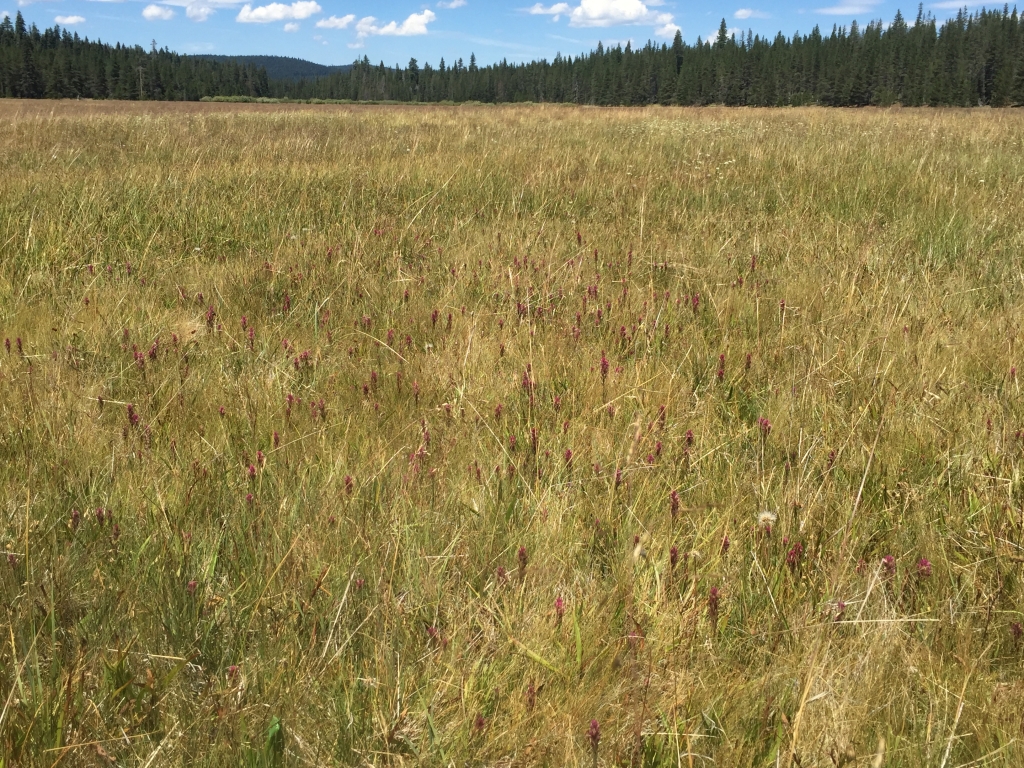
One of the largest populations of Lassen paintbrush occurs within a riparian meadow along Robbers Creek in the Lassen National Forest. Although this meadow continues to support a diversity of wetland plant species, its hydrologic function has severely declined in recent decades due to anthropogenic disturbances (e.g., grazing and draining the meadow floodplain). To restore natural ecological processes within the meadow, regional partners including Point Blue Conservation Science, the Sierra Institute, and the Lassen National Forest teamed up to implement the Robbers Creek Watershed Restoration Project. The project was completed in October 2024 and involved extensive ground-disturbing work around the meadow’s seasonal floodplain channels, including riffle augmentation, installation of beaver dam analogs, road contouring, and filling in several ditches.
Although this project should benefit the overall integrity of the riparian meadow ecosystem, these restoration activities will rapidly alter floodplain dynamics and may result in unintended consequences. For Lassen paintbrush, given its narrow hydrologic niche, floodplain restoration may reduce and/or shift the extent and location of suitable habitat. To mitigate for potential negative effects on the Lassen paintbrush population, the restoration partners decided to proactively augment the population. Hence where IAE comes into play.

Paintbrush species tend to be difficult to propagate and transplant. However, IAE has a history of success propagating and transplanting the golden paintbrush (Castilleja levisecta) in Oregon. Golden paintbrush is a former federally endangered species that has since been delisted (in 2023), thanks in large part to successful reintroduction efforts at dozens of sites across the Willamette Valley. Given IAE’s involvement with golden paintbrush restoration, the Sierra Institute reached out to IAE about producing Lassen paintbrush plugs for the Robbers Creek Watershed Restoration Project.
Figuring out how to successfully grow plugs for a rare plant species with no documented history of propagation is not an easy task. This challenge is magnified for paintbrush species given their finicky growth requirements. Fortunately, IAE Plant Materials staff Mara Friddle and Kate Wellons were up to the task. IAE received seed from the Sierra Institute in fall 2022 and promptly began a trial-and-error process to get the seed to germinate. Following an initial two-month cold stratification period, only 2% of seeds germinated… Not enough. Considering the high elevation where this species occurs, we decided to try again by increasing the cold stratification period to four months. Success! Over 90% of seeds germinated and we were able to get 500 plugs growing in our greenhouse. Although it is sometimes beneficial to grow paintbrush with a host plant, we opted against doing within plug “cone-tainers” since host plants can sometimes crowd out the paintbrush, making it difficult to manage. Instead, we loaded the soil with extra nutrients to ensure adequate growing conditions, which seemed to do the trick.
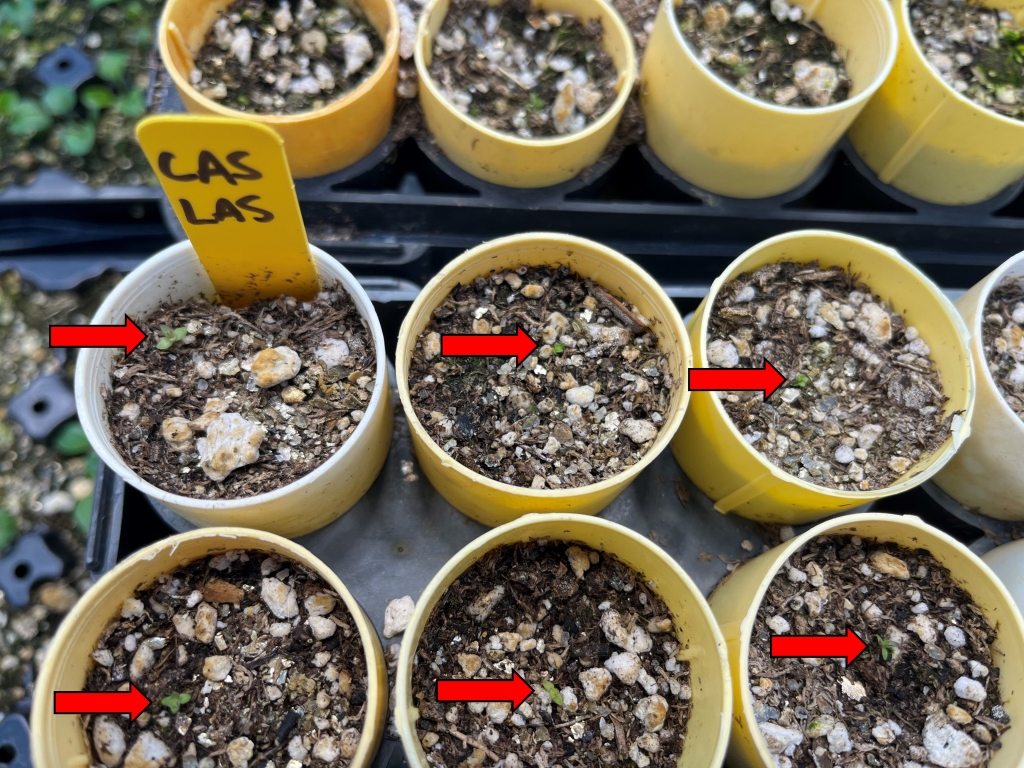
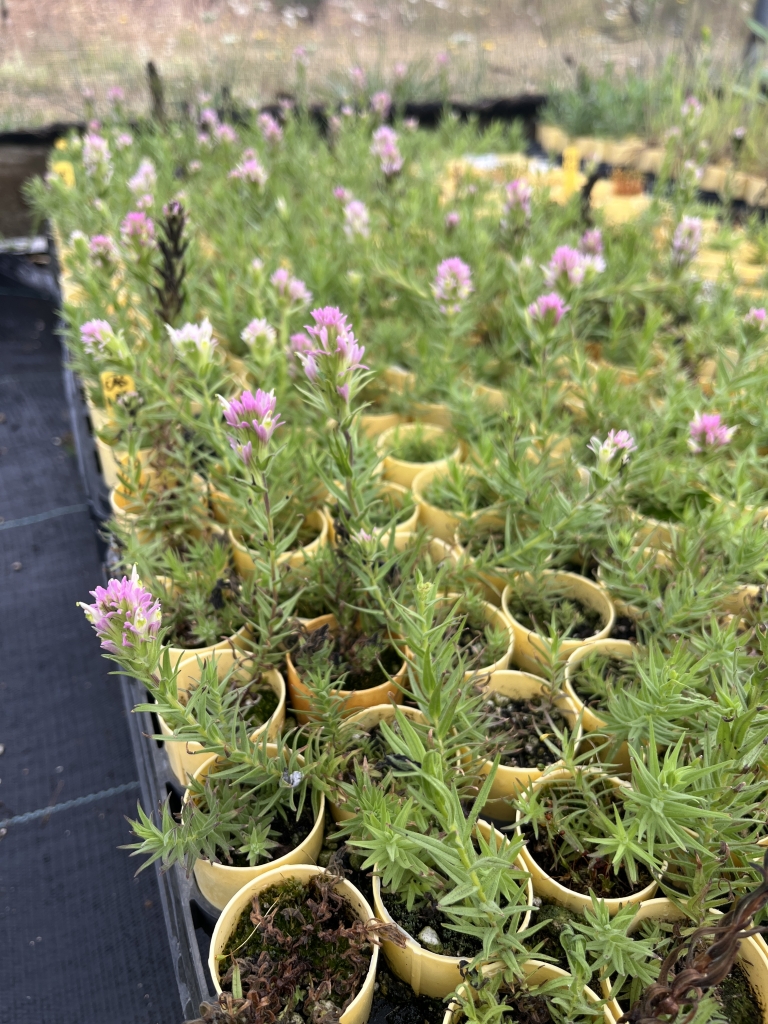
A week after the Robbers Creek Restoration Project concluded, it was finally time to outplant. Paul and Andrew drove the plugs down to the Lassen National Forest, where we met up with several folks from the Sierra Institute and the U.S. Forest Service. Using this first batch of 500 plugs, we hope to gain insight into which areas of the meadow will be most suitable for Lassen paintbrush now that the floodplain hydrology has been altered. We planted plugs along five 100-m transects that spanned several environmental gradients across the meadow, collecting data at planting points on the surrounding plant community, ground elevation, and other surface features. Project partners will monitor plug survival over the next several years and correlate these data to gain a better understanding of where plugs will be most successfully planted in future efforts. Ultimately, we hope to outplant an additional 1,000 or more plugs once we learn more from this pilot batch.
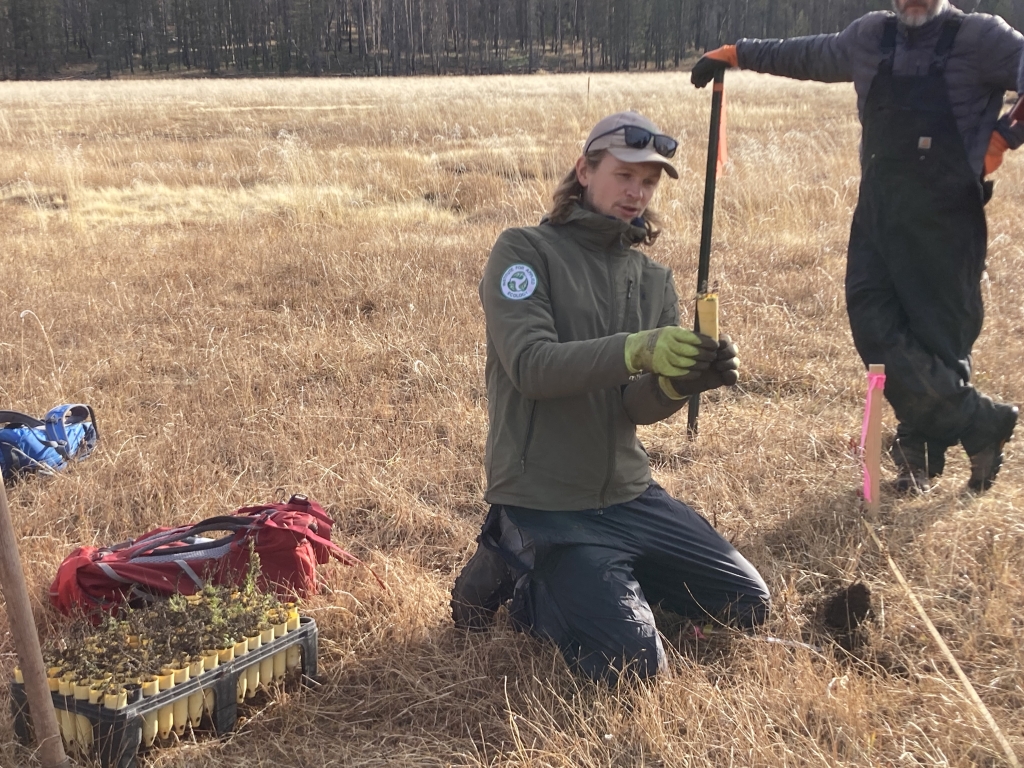
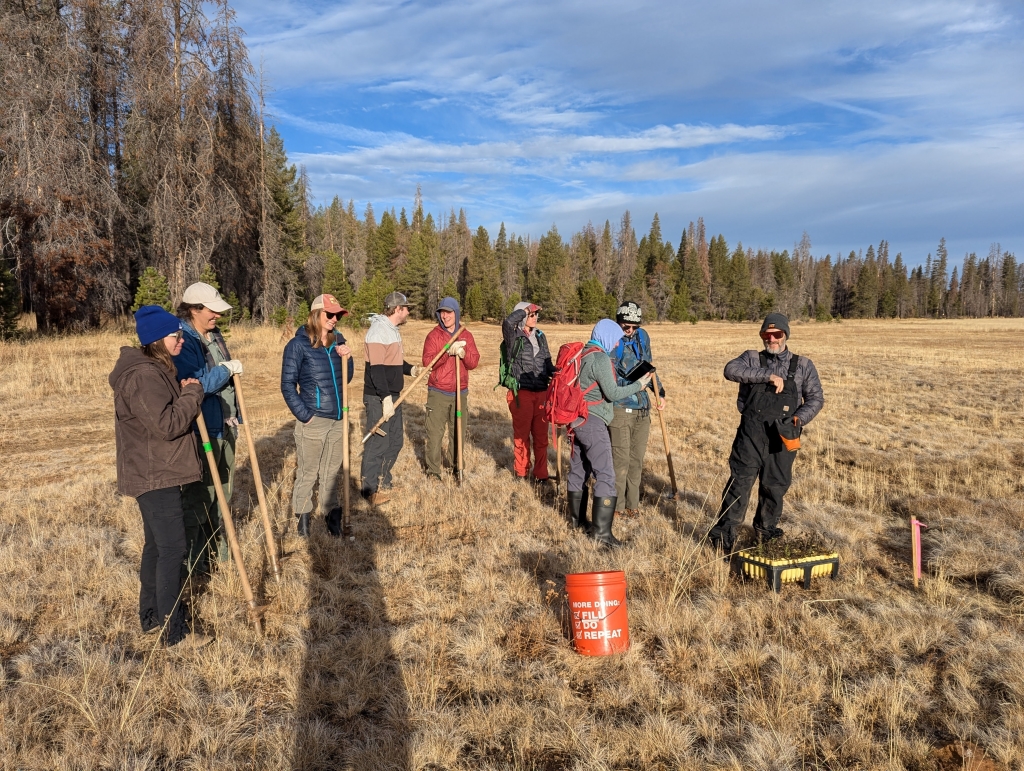

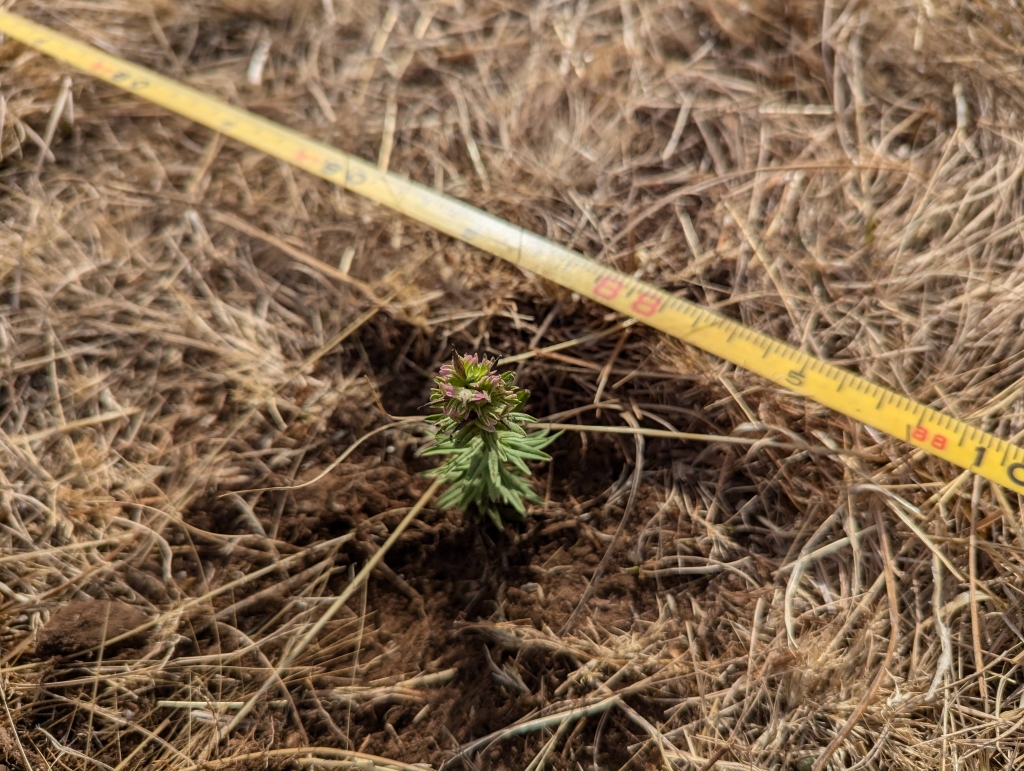
We would like to thank the Sierra Institute for Community and Environment for funding this work, as well as for coordinating seed collection and outplanting efforts. We also thank partners at the U.S. Forest Service Lassen National Forest and Point Blue Conservation Science who were instrumental in helping to support the project. We look forward to growing more Lassen paintbrush and for another excuse to take a trip down to the Sierra Nevada mountains!
